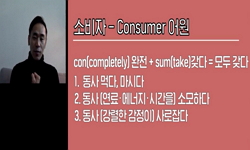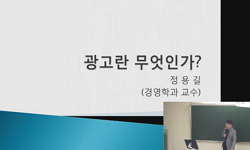This study examines the effects of message framing, framing types and regulatory focus on attitudes towards and purchase intention for a digital camera. Specifically, there were moderating roles of framing types and regulatory focus on the relationshi...
http://chineseinput.net/에서 pinyin(병음)방식으로 중국어를 변환할 수 있습니다.
변환된 중국어를 복사하여 사용하시면 됩니다.
- 中文 을 입력하시려면 zhongwen을 입력하시고 space를누르시면됩니다.
- 北京 을 입력하시려면 beijing을 입력하시고 space를 누르시면 됩니다.

메시지 방향성이 광고 반응에 미치는 효과 연구 = Moderating Roles of Framing Types and Regulatory Focus on the Relationships between Message Framing and Advertising Responses
한글로보기https://www.riss.kr/link?id=A103971446
- 저자
- 발행기관
- 학술지명
- 권호사항
-
발행연도
2011
-
작성언어
Korean
-
주제어
메시지 측면성 ; 프레이밍 ; 속성프레이밍 ; 목적 프레이밍 ; 조절초점 ; 관여도 ; message sidedness ; framing ; attribute framing ; goal framing ; regulatory focus ; involvement
-
등재정보
KCI등재
-
자료형태
학술저널
- 발행기관 URL
-
수록면
169-189(21쪽)
-
KCI 피인용횟수
13
- DOI식별코드
- 제공처
- 소장기관
-
0
상세조회 -
0
다운로드
부가정보
다국어 초록 (Multilingual Abstract)
This study examines the effects of message framing, framing types and regulatory focus on attitudes towards and purchase intention for a digital camera. Specifically, there were moderating roles of framing types and regulatory focus on the relationships between message framing and such outcome measures as attitudes and purchase intention. While a large number of studies examined the effects of message framing on persuasion without regard to framing types such as attribute framing and goal framing this study suggests that the effects of message framing differ between attribute framing and goal framing. In the context of attribute framing, positively framed messages were more effective than negatively framed messages regardless of participants’ regulatory focus. However, in goal framing context, it was found that the effect of message framing on attitudes and purchase intention was moderated by participants’ regulatory focus. Past studies suggested that promotion focused consumers were influenced more by positively framed messages while prevention focused consumers were affected more by negatively framed messages. This study, however, found that the moderating role of regulatory focus was reversed under high involvement context. In specific, promotion focused participants were more influenced by negatively framed messages while prevention focused participants were affected more by positively framed messages, indicating regulatory unfit effect rather than regulatory fit effect under high involvement context.
국문 초록 (Abstract)
본 연구는 메시지 프레이밍의 효과를 연구한 것으로, 메시지 방향성 (긍정적/부정적)이 제품태도와 구매의도에 미치는 영향의 차이를 프레이밍 유형 (속성 프레이밍 vs 목적 프레이밍)과 소...
본 연구는 메시지 프레이밍의 효과를 연구한 것으로, 메시지 방향성 (긍정적/부정적)이 제품태도와 구매의도에 미치는 영향의 차이를 프레이밍 유형 (속성 프레이밍 vs 목적 프레이밍)과 소비자의 조절초점 (촉진적 또는 방어적) 에 따라 조절되어진다는 것을 실증적으로 밝히고 있다. 많은 과거 메시지 프레이밍의 연구들이 프레이밍 유형의 구분 없이 프레이밍 연구를 다루었는데 이 연구에서는 속성 프레이밍의 경우는 Levin, Schneider 와 Gaeth (1998)가 주장한 것처럼 긍정적 메시지 프레이밍이 소비자의 조절초점에 상관없이 부정적 메시지 프레이밍 보다 제품태도와 구매의도에 더 효과적인 것으로 나타난 반면, 목적 프레이밍의 경우에서는 소비자의 조절초점에 따라서, 제품태도와 구매의도간에 차이가 나타남을 보여준다. 특히 주목할 점은 기존의 조절초점이론에서 받아들여지고 있는 조절초점과 메시지사이의 일치가 이루어진 경우에 더 효과적인 것이 아니라, 촉진초점인 경우에는 부정적 메시지 프레이밍이 긍정적 메시지 프레이밍 보다 더 효과적으로 나타난 반면, 방어초점인 경우에는 긍정적 메시지 프레이밍이 부정적 메시지 프레이밍 보다 효과적인 것으로 나타났다. 이 연구결과는 기존의 수동적으로 정보처리 하는 상황하의 조절초점이론의 연구를 능동적으로 정보처리 하는 상황으로 연장시킨다고 볼 수 있다. 구체적으로, Wang 과 Lee (2006)의 연구에서 보인 것처럼, 고관여 상황인 경우에는 기존의 조절초점이론의 예측과는 반대되는 결과를 보여준다는 것을 다시 한 번 입증했다고 볼 수 있다. 더 나아가, 프레이밍 유형을 구분함으로써, 메시지 방향성에 대한 제품태도와 구매의도의 차이가 조절초점에 의해서 조절되어지는 것이 목적 프레이밍에 한정 되어 있다는 것을 보여줌으로써, 조절초점이 메시지 프레이밍에 갖는 영향의 경계에 대해서도 의미 있는 결과를 제시했다고 볼 수 있다. 위에서 밝힌 이론적 기여뿐 아니라, 실용적인 측면에서도, 광고실무자들은 이 연구 결과를 바탕으로 광고 메시지의 방향성을 결정할 때 메시지를 속성 프레이밍 할 경우에는 긍정적 메시지를 사용하는 것이 더 효과적일 것이고, 목적 프레이밍인 경우에는 메시지 방향성을 결정할 때 소비자들의 조절초점과 관여도를 바탕으로 메시지 방향성이 결정 되어져야 한다는 것을 시사하고 있다.
참고문헌 (Reference)
1 Mellers, B. A., "Trade-offs depend on attribute range" 20 : 1055-1067, 1994
2 Wang, J., "The role of regulatory focus in preference construction" 43 : 28-38, 2006
3 Maheswaran, D., "The influence of message framing and issue involvement" 27 : 361-367, 1990
4 Zhao, G., "The impact of regulatory focus on adolescents' response to antismoking advertising campaigns" 44 (44): 671-687, 2007
5 Meyerowitz, B. E., "The effect of message framing on breast self-examination attitudes, intentions, and behavior" 52 : 500-510, 1987
6 Lee, A. Y., "The Persuasive Power of regulatory fit. in The Social Psychology of Consumer Behavior" Psychology Press 319-333, 2009
7 Fiske, S. X, "Social cognition" McGraw-Hill 1991
8 Rothman, A. J., "Shaping perceptions to motivate healthy behavior: The role of message framing" 121 : 3-19, 1997
9 Evans, L. M., "Self-guide framing and persuasion: Responsibly increasing message processing to ideal levels" 29 (29): 313-24, 2003
10 Cesario, J,, "Regulatory fit and persuasion: Transfer from feeling right" 86 (86): 388-404, 2004
1 Mellers, B. A., "Trade-offs depend on attribute range" 20 : 1055-1067, 1994
2 Wang, J., "The role of regulatory focus in preference construction" 43 : 28-38, 2006
3 Maheswaran, D., "The influence of message framing and issue involvement" 27 : 361-367, 1990
4 Zhao, G., "The impact of regulatory focus on adolescents' response to antismoking advertising campaigns" 44 (44): 671-687, 2007
5 Meyerowitz, B. E., "The effect of message framing on breast self-examination attitudes, intentions, and behavior" 52 : 500-510, 1987
6 Lee, A. Y., "The Persuasive Power of regulatory fit. in The Social Psychology of Consumer Behavior" Psychology Press 319-333, 2009
7 Fiske, S. X, "Social cognition" McGraw-Hill 1991
8 Rothman, A. J., "Shaping perceptions to motivate healthy behavior: The role of message framing" 121 : 3-19, 1997
9 Evans, L. M., "Self-guide framing and persuasion: Responsibly increasing message processing to ideal levels" 29 (29): 313-24, 2003
10 Cesario, J,, "Regulatory fit and persuasion: Transfer from feeling right" 86 (86): 388-404, 2004
11 Cesario, J., "Regulatory fit and persuasion: Basic principles and remaining questions" 2 (2): 444-463, 2008
12 Higgins,E.T, "Promotion and prevention: regulatory focus as a motivational principle" 30 : 1-46, 1998
13 Lockwood, P., "Motivation by positive or negative role models: Regulatory focus determines who will best inspire us" 83 (83): 854-64, 2002
14 Levin, I. P., "How consumers are affected by the framing of attribute information before and after consuming the product" 15 : 374-378, 1988
15 Higgins,E.T, "How Self-Regulation Creates Distinct Values: The Case of Promotion and Prevention Decision Making" 12 (12): 177-91, 2002
16 Chaiken,S, "Heuristic versus systematic information processing and the use of source versus message cues in persuasion" 39 (39): 752-66, 1980
17 Chaiken, Shelly, "Heuristic processing can bias systematic processing: Effects of source credibility, argument ambiguity, and task importance on attitude judgment" 66 (66): 460-473, 1994
18 O'Keefe, D. J., "Do loss-framed persuasive messages engender greater message processing than do gain-framed messages? A meta-analytic review" 59 (59): 51-67, 2008
19 Idson, L. C, "Distinguishing gains from nonlosses and losses from nongains: A regulatory focus perspective on hedonic intensity" 36 (36): 252-74, 2000
20 Janiszewski, C., "Different scales for different frames: The role of subjective scales and experience in explaining attribute-framing effects" 30 : 311-325, 2003
21 Petty, R. E, "Communication and Persuasion: Central and Peripheral Routes to Attitude Change" Springer-Verlag 1986
22 Lee, A. Y., "Bringing the frame into focus: The nfluence of regulatory fit on processing fluency and persuasion" 86 (86): 205-218, 2004
23 Higgins,E.T, "Beyond Pleasure and Pain" 52 (52): 1280-1300, 1997
24 Levin, I. P., "All frames are not created equal: A typology and critical analysis of framing effects" 76 : 149-188, 1998
동일학술지(권/호) 다른 논문
-
- 한국소비자·광고심리학회
- 유연재
- 2011
- KCI등재
-
제품광고의 사회적 메시지가 광고효과에 미치는 영향: 감정이입과 조절적 동기의 역할
- 한국소비자·광고심리학회
- 조용석
- 2011
- KCI등재
-
소비자 혁신 저항, 사전지식 및 광고유형이 광고태도와 구매의도에 미치는 영향
- 한국소비자·광고심리학회
- 전홍식
- 2011
- KCI등재
-
시장지위에 따른 동업종 기업 간 수평적 공동광고의 소비자반응
- 한국소비자·광고심리학회
- 송정미
- 2011
- KCI등재
분석정보
인용정보 인용지수 설명보기
학술지 이력
| 연월일 | 이력구분 | 이력상세 | 등재구분 |
|---|---|---|---|
| 2027 | 평가예정 | 재인증평가 신청대상 (재인증) | |
| 2021-01-01 | 평가 | 등재학술지 유지 (재인증) |  |
| 2018-01-01 | 평가 | 등재학술지 유지 (등재유지) |  |
| 2015-01-01 | 평가 | 등재학술지 유지 (등재유지) |  |
| 2011-01-01 | 평가 | 등재학술지 유지 (등재유지) |  |
| 2009-01-01 | 평가 | 등재학술지 유지 (등재유지) |  |
| 2006-01-01 | 평가 | 등재학술지 선정 (등재후보2차) |  |
| 2005-05-30 | 학술지명변경 | 한글명 : 한국심리학회지: 소비자/광고 -> 한국심리학회지: 소비자·광고 |  |
| 2005-01-01 | 평가 | 등재후보 1차 PASS (등재후보1차) |  |
| 2003-01-01 | 평가 | 등재후보학술지 선정 (신규평가) |  |
학술지 인용정보
| 기준연도 | WOS-KCI 통합IF(2년) | KCIF(2년) | KCIF(3년) |
|---|---|---|---|
| 2016 | 1.23 | 1.23 | 1.38 |
| KCIF(4년) | KCIF(5년) | 중심성지수(3년) | 즉시성지수 |
| 1.28 | 1.35 | 2.111 | 0.15 |




 KCI
KCI






